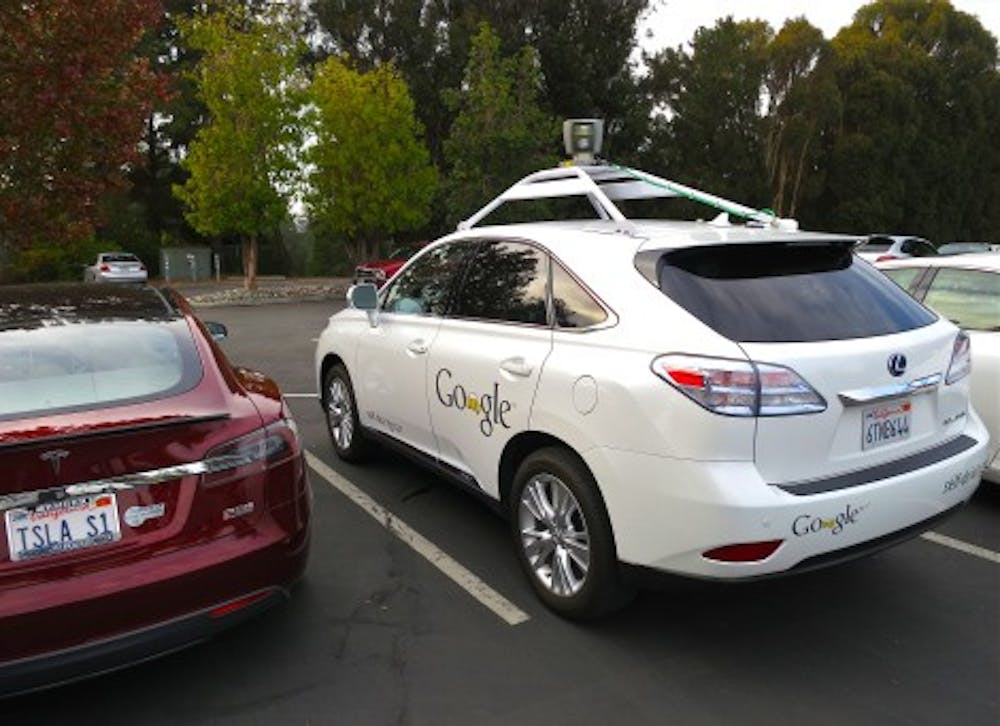By SABRINA CHEN
Automobile engineers boast that by 2020 all of us will become permanent backseat drivers. This forecast is becoming increasingly plausible with the recent advances in self-driving car technology. Earlier this week Honda became the 10th motor vehicle company to receive a self-driving permit in California.
With its newly acquired permit, Honda will be joining the ranks of companies like Google, Volkswagen, Tesla and BMW in testing this rapidly growing technology. Meanwhile, Japanese carmakers have been slower than their competitors in getting its self-driving models on the roads. Companies such as Tesla and BMW are already offering semi-autonomous features in their vehicles.
Honda has set up its testing facility in Concord, Calif. about 30 miles northeast of San Francisco. According to a Honda spokesman, cars will be test-run at this secure site before any on-road testing occurs. Honda has decided to extend its driver-assistance systems to both its Honda and Acura models.
Along with several other major automobile companies, Honda is signed up to use Google’s Android Auto software in its autonomous cars. This in-car software allows users to control music and messaging services on an Android smartphone that is synched with the car’s controls. Users will also be able to access apps like Google Maps by voice, steering wheel or the car’s touchscreen.
Only a few states — California, Michigan, Florida and Nevada — allow the testing of self-driving cars on public roads with a permit. Outside of the United States, self-driving car trials have been held throughout Britain at Greenwich, Bristol, Milton Keynes and Coventry. The trials have been a component of the government-backed initiative to test possibilities and eliminate any pitfalls of the technology.
Though self-driving cars have gained prominence in recent years, many people express concerns about their use. According to an Opinium poll, the issue most people worry about with regard to driverless cars is that the automobile’s sensors may not see something in their way or freezing and breaking down while driving.
Another issue is the question of insurance liability. Because a self-driving car would not really involve a human driver, how could a driver be at fault in an accident? Hacking is yet an additional problem that brings up concern. An automated highway could become a likely target for cyberterrorism. In fact, at one technology conference, hackers proved that they could send commands from their laptop to make a Toyota Prius sound its horn and brake abruptly at 80 miles per hour.
Due to these concerns, further levels of security will likely be added to automated cars before any are put to use. Some companies are looking toward robotics instead of mechanics to change the direction of self-driving automobile technology. Although complex human behavioral decision-making is very difficult to program into any machine, engineers hope that with large amounts of experience and knowledge this decision-making skill can become instinctual.
Machines do offer several advantages over human drivers. For example, sensors never get tired or distracted, and they will always function at the same level. Many people therefore believe that driverless cars will bring safety benefits to the roads. Accidents caused by texting, drowsiness, drunk driving and overall incompetence will be greatly lessened.
According to a BMW representative, the first highly automated self-driving car will be ready by 2020. This would mean that drivers would be able to read emails, take phone calls or check the news instead of working the gas and brake pedals.
Engineers caution that, even in this mode, there will be situations where the car will reach a limit, and the system might tell the driver to take over with only a 15- to 20-second warning.
Regardless of current limitations, however, engineers hope that this new technology will be able to lessen the frequency of automobile accidents, the primary cause of death worldwide for people aged 15-24. That’s the overall goal of self driving cars: to remove human error from a task that has always been human-operated.





